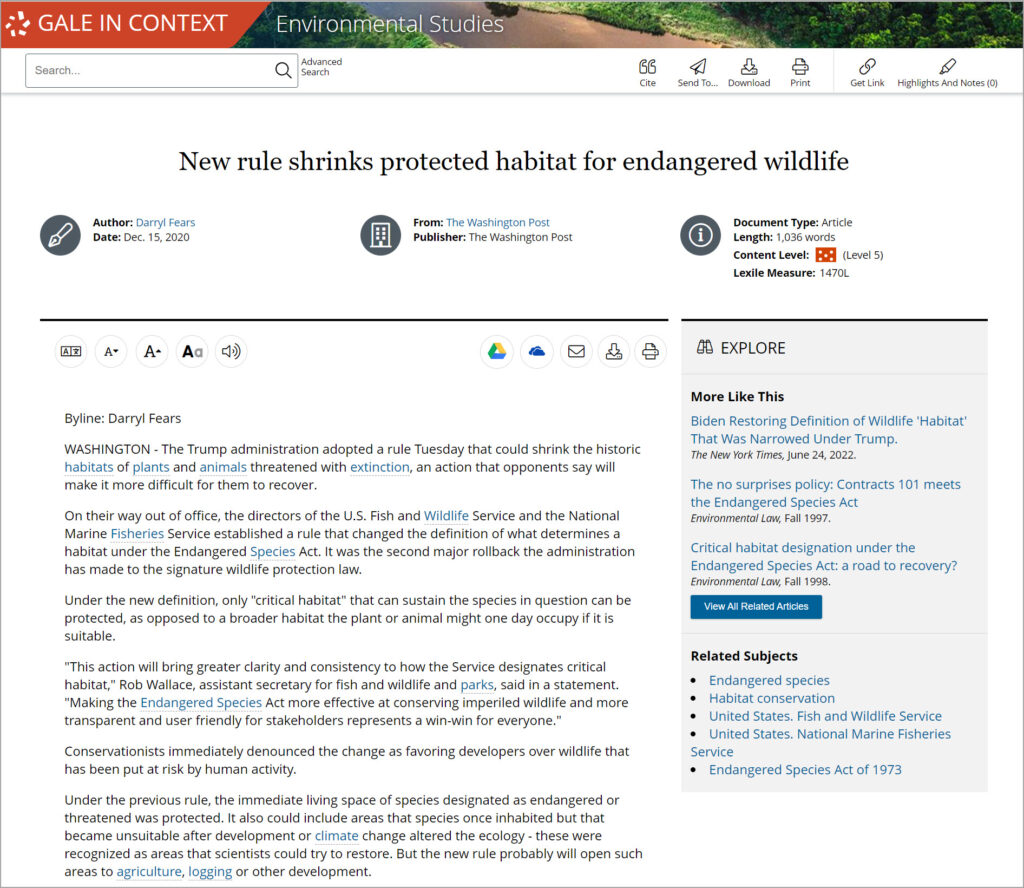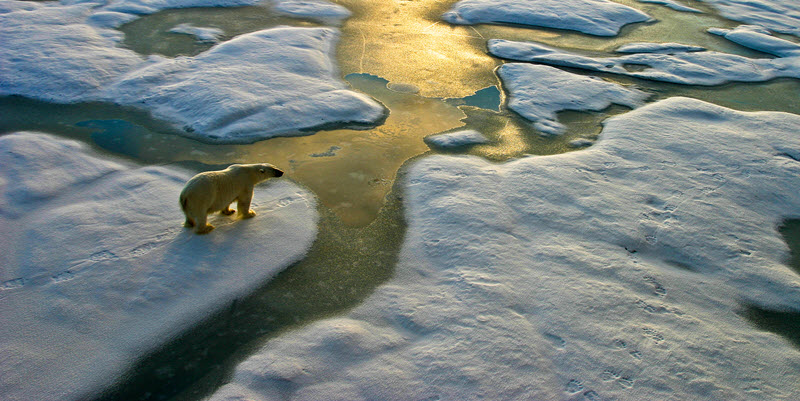| By Gale Staff |
December 28, 2023, marks the 50th anniversary of theEndangered Species Act(ESA). This vital legislation has created a framework through which government agencies, local organizations, and private individuals can collaborate to protect and conserve vulnerable species. Thanks to the ESA, remarkable animals like the American alligator, the peregrine falcon, and the bald eagle have made incredible comebacks and may continue to thrive for generations.
The 50th anniversary of the ESA provides educators and students an opportunity to learn about endangered species and create a timeline reflecting the ESA’s evolution over the decades. High school teachers can help students reflect on their own environmental impact and facilitate action around meaningful conservation efforts.
Trace the ESA’s Timeline
Through the lens of environmentalism and the ESA, encourage your students to research and develop a timeline reflecting the changes in public opinion and government action throughout the latter half of the twentieth century and today.
Rather than starting research with the inception of the ESA, students can begin further in the past to see what inspired the movement.
1962
Biologist Rachel Carson publishedSilent Spring. An immediate bestseller, the book raised awareness of and inspired public support for environmental protection.
1966
The catalyst for the 1973 establishment of the ESA started in the 1960s. In 1966, the federal government passed its first endangered species initiative, the Endangered Species Preservation Act. The legislation instituted a list of native fish and wildlife for federal protection. The list features birds, reptiles, fish, and mammals (like theDelmarva Peninsula fox squirrel).

1970
President Nixon formed theEnvironmental Protection Agency(EPA)在回应公众越来越关注environmental protection. The EPA’s mission is to address and solve ongoing environmental issues around clean air, water, and land.
1973
Despite pushback from big industry, the federal government signed the Endangered Species Act into law. The ESA gives new authority to environmental agencies and establishes critical habitat zones for conservation purposes.
1977
The ESA expanded its protected species list to include plants. One of the first plant species listed is theSan Clemente Island Indian Paintbrush.
1982
Congress passed an amendment to the original ESA bill. The amendment includes several changes, such as “incidental take” permits. Incidental take defines actions that negatively impact protected species, such as tree removal or chemical runoff. These licenses allow individuals engaged in potentially environmentally harmful projects to bypass EPA penalties. An organization must submit a comprehensive habitat conservation plan to qualify for an exception, but it’s a loophole nonetheless.Modern building projectsstill actively rely on the exceptions presented by the 1982 amendment.
1988
The United Nations formed theIntergovernmental Panel on Climate Change(IPCC), a leading climate change research and mitigation organization. 1988 also marks a new amendment to the ESA, allowing the U.S. Fish and Wildlife Service to add emergency listings to the federally protected species list. This change helps conservation officials skip the traditional lengthy approval process and provides a period during which scientists can collect sufficient evidence to support the new listing.
2004
President Bush amended the ESA in relation to the National Defense Authorization Act. The new legislation exempts the U.S. Department of Defense from traditional conservation barriers,inciting controversy among environmental groups. The change permitted U.S. military services to engage in activities potentially harmful to protected species.
2008
Because of melting ice in the Arctic, theESA added the polar bear to its endangered species list, making this species a symbol of climate change’s real consequences. For years after,scientists continue to use the polar bear to warnabout the disastrous effects of melting sea ice on habitat loss and coastal communities. Melting ice led toemperor penguinsjoining the list in 2022.
2018
Under President Trump, new regulations sought to dismantle the ESA’s established framework. In 2018, the administration allowed officials to factor in economic impacts, such as potential revenue loss, when considering a species for the endangered species list. In 2020, legislators sought tonarrow the definition of critical habitat, thus providing more opportunities for developers.

2023
The Biden administrationrestored ESA protectionsand added new rules, making it harder to remove species from the list and prioritizing environmental conservation over economic gain.
Inspire Commitment for the Next 50 Years
Since the ESA’s inception, hundreds of species have successfully come back from the brink of extinction. However, without the growing public interest and support for environmental protections throughout the 1960s and 1970s, this critical legislation might not exist.
多年来通过nd public support spreads elsewhere, politicians chip away at the ESA’s authority, adding small amendments and creating loopholes. This timeline illustrates how environmental protections are not set in stone but can change with the political and social tides. Your high school students will soon be able to vote, and the next generation will shape the next 50 years of the environmental movement.
Integrate Relevant Resources
Gale In Context: Environmental Science是一家综合性、跨学科收集for environmental and sustainability scholarship. Students can access thousands of pertinent, curated resources related to the intersection of the environment and food, healthcare, economics, and public policy. Integrating these topics into learning is not only helpful toward reducing your community’s environmental footprint but is also valuable for your students’ future success. Hiring managers increasingly seek candidates with experience in sustainability and renewable technologies.
High school teachers can use the information inGale In Context: Environmental Scienceto inspire curiosity and environmental accountability. The Endangered Species Act may be a federal law, but individuals can make small, local changes to help support their community’s ecosystem. Discover whatendangered specieslive in your state — how might your class help protect them? You might install a community garden, practice waste reduction tactics like upcycling and recycling classroom materials, or even draft a letter to your local congressperson asking them to support any current environmental legislation.
To celebrate the anniversary of the ESA, lean onGale In Context: Environmental Scienceto reinvigorate interest in endangered species and related policy. If your school isn’t an active Gale subscriber,contact your local representativeto learn more about Gale’s themed research collections and access a product trial. You can also find additional official information, including a copy of the 1973 Endangered Species Act, through theU.S. Fish & Wildlife Service.

